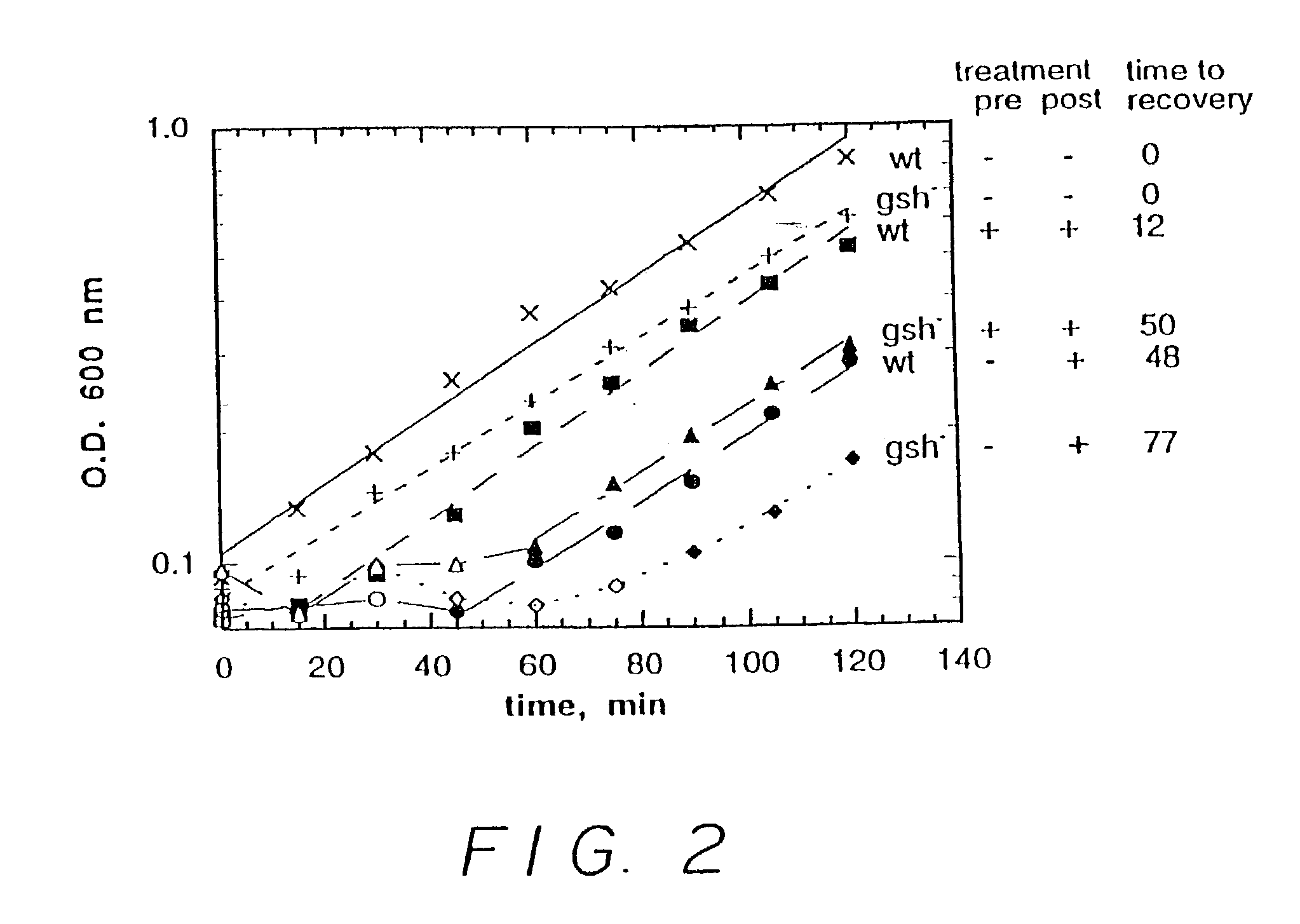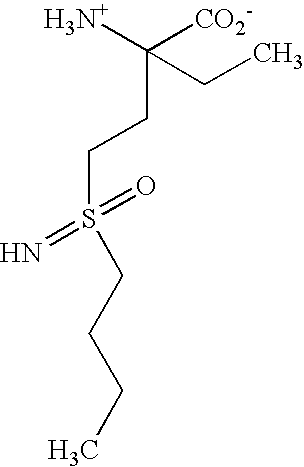Manipulating nitrosative stress to kill pathologic microbes, pathologic helminths and pathologically proliferating cells or to upregulate nitrosative stress defenses
a technology of nitrosative stress and helminths, which is applied in the direction of drug compositions, peptide/protein ingredients, metabolic disorders, etc., can solve the problems of organ dysfunction caused by excessive production of no
- Summary
- Abstract
- Description
- Claims
- Application Information
AI Technical Summary
Benefits of technology
Problems solved by technology
Method used
Image
Examples
example i
Inhibition of E. Coli Gamma-Glutamylcysteine Synthetase by BSO Analogs
[0163]It has been known since the 1970's that methionine sulfoximine potently inhibits glutamine synthetase and gamma-glutamylcysteinyl synthetase (gamma-GCS) in mammalian systems. In 1978, O. W. Griffith and A. Meister reported that selective inhibition of either glutamine synthetase or gamma-GCS could be achieved using analogs of methionine sulfoximine. Thus, glutamine synthetase was inhibited by α-ethyl-DL-methionine-SR-sulfoximine, a compound which did not significantly inhibit gamma-GCS, and gamma-GCS was inhibited by DL-prothionine-SR-sulfoximine, a compound which did not significantly inhibit glutamine synthetase. Griffith, O. W., et al., J. Biol. Chem. 253, 2333–2338 (1978) and Griffith, O. W., et al., J. Biol. Chem. 254, 1205–1210 (1979). FIG. 5 in the second mentioned reference shows schematically the basis of this selectivity. As shown, the glutamate binding site of glutamine synthetase can accommodate ...
example ii
Proof that Nitrosating Agent Causes Reduction in Bacterial Growth and that Pretreatment with Nitrosating Agent Induces Resistance to Later Treatment with Nitrosating Agent
[0166]In a first experiment, six runs were carried out. In three of the runs, wild type E. coli were incubated in bacterial growth medium. In the other three runs, E. coli lacking a gene essential for glutathione production (in particular, lacking a gene expressing gamma-glutamylcysteine synthetase, hereinafter glutathione deficient E. coli) were incubated in the bacterial growth medium. In one run, for each of the wild type E. coli and the glutathione deficient E. coli, no nitrosating agent was employed. In one run, for each of the wild type E. coli and the glutathione deficient E. coli, 0.5 mM S-nitrosocysteine (a nitrosating agent) was added after two hours. In one run, for each of the wild type E. coli and the glutathione deficient E. coli, 0.2 mM S-nitrosocysteine was added initially and 0.5 mM S-nitrosocystei...
example iii
[0170]A patient with E. coli caused gastroenteritis with bloody diarrhea is administered α-ethyl-L-buthionine-S-sulfoximine (hereinafter α-ethyl BSO) orally at a dose of 10 mmol / kg body weight four times a day. Bloody diarrhea resolved over four days. similar results obtained using the same dose of α-ethyl-L-buthionine-S-sulfoximine given intravenously at the same dose.
PUM
| Property | Measurement | Unit |
|---|---|---|
| Stress optical coefficient | aaaaa | aaaaa |
Abstract
Description
Claims
Application Information
 Login to View More
Login to View More - R&D
- Intellectual Property
- Life Sciences
- Materials
- Tech Scout
- Unparalleled Data Quality
- Higher Quality Content
- 60% Fewer Hallucinations
Browse by: Latest US Patents, China's latest patents, Technical Efficacy Thesaurus, Application Domain, Technology Topic, Popular Technical Reports.
© 2025 PatSnap. All rights reserved.Legal|Privacy policy|Modern Slavery Act Transparency Statement|Sitemap|About US| Contact US: help@patsnap.com



